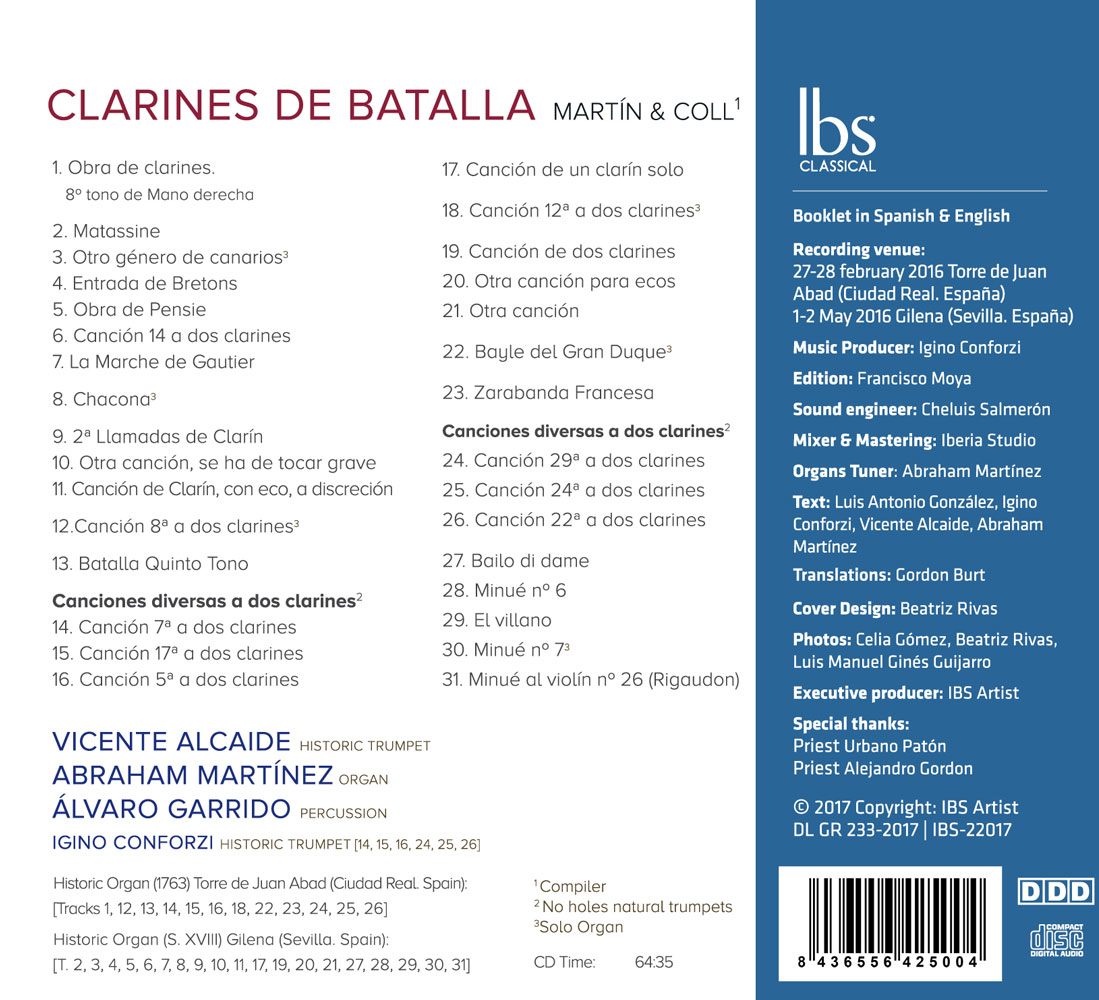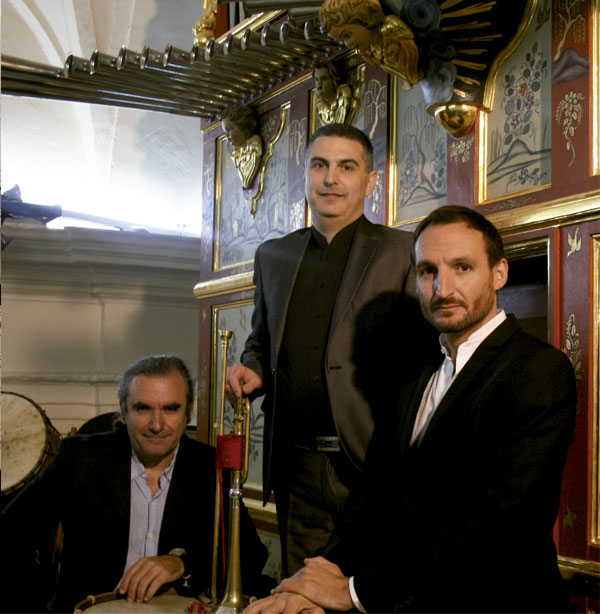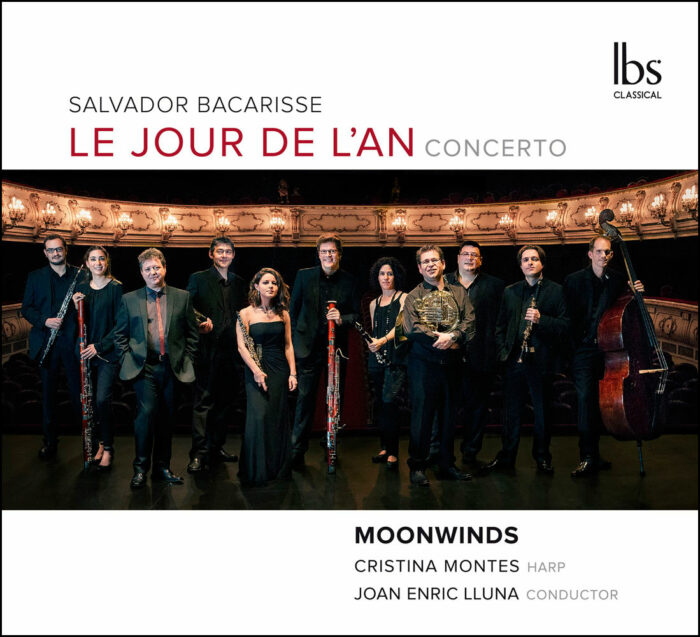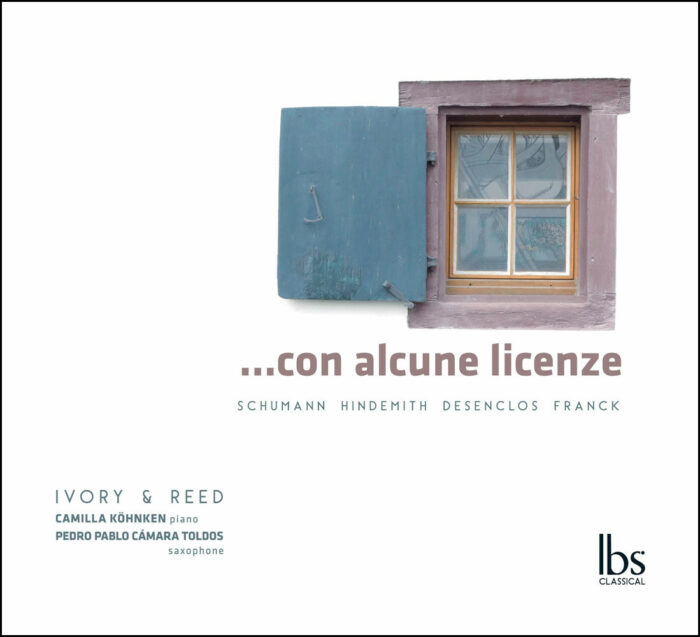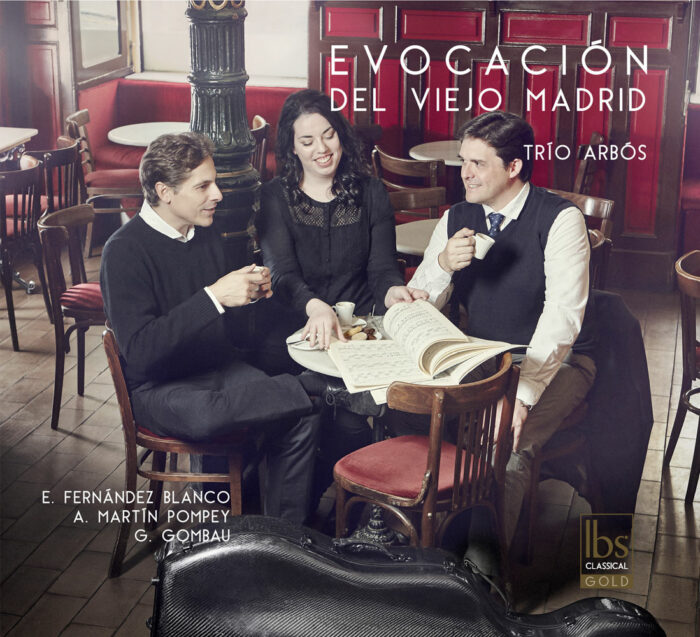Clarines
13,95€
Clarines de Batalla
The music selected for this recording is from the Spanish Baroque repertoire compiled by the Franciscan priest, organist, composer and collector of music Antonio Martín y Coll (1660-1734) in various books published at the beginning of the eighteenth century, specifically between 1706 and 1709. Although this music was originally composed to be played by organists, a substantial part was in fact influenced, in compositional terms, by the prevailing performance style of the time that employed clarines the name given to the trumpets played in the upper registers, also known as the clarin register. Early evidence points to their use on solemn occasions thanks to the brilliance of their sound.
13,95€
Martín y Coll
Martín y Coll and the music for bugle-horns» title_2=»The trumpet in Spain» tab_1=»Martín y Coll offers the opportunity to learn of genuine clarin calls and pieces likely to be in use at the end of the seventeenth century and the start of the eighteenth. It must not be forgotten that clarines, generally associated with the kettledrum or timbales, fulfilled a musical role but also, and above all, constituted a sonorous signal of a heraldic and even martial nature with precise and recognisable aims, evoking calls to diverse military actions as well as the sounds proper to different lords, houses, families, institutions, etc. All recall the famed Toccata preceding the music for Claudio Monteverdi’s L’Orfeo (and which he reused as a quote a little later at the start of his Vespers), a piece, a sort of sonorous pennant or shield belonging to the Gonzaga Mantovanos, that its subjects, citizens, and residents probably identified with its very first notes. The same may have occurred with at least some of the few similar examples known to us from the seventeenth century Hispanic repertoire, such as the well-known tocata de chirimías (in fact typical clarin music) used by Joseph Ruiz Samaniego in an Epiphany carol in 1664 and cited by Pablo Bruna too in one of his contrapuntal tientos. Martín y Coll’s collection enlarges this panorama significantly, at the same time making it possible to speculate and reflect, with ready arguments, about the significance for the musicians and listeners of the time of the use of these compositions outside their original context, making this happy initiative to recover this music with the instruments for which it was presumably written a cause for celebration. (Luis Antonio González)» tab_2=»The peculiar and powerful world of the trumpet corporations also appears in sixteenth- century Spain. The influential presence of a “scuola italiana” enjoying major privileges and attributions may be associated in part with the tradition where the first and authentic scores for trumpet and basso continuo are found.The listener is invited to focus listening to the pieces proposed not just from a historic perspective but rather, and above all, from the standpoint of representativeness of the instrument, a visual aesthetic peculiar in the pomp and charisma of its sound.(Igino Conforzi)»

